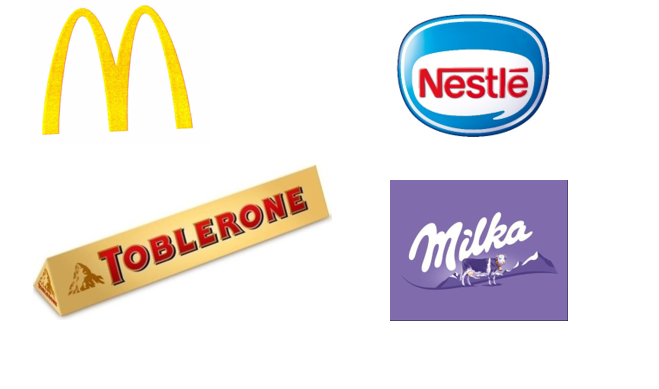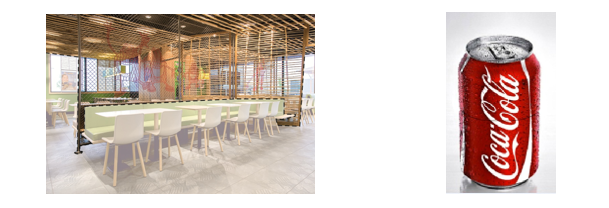How Food and Beverage Companies Can Best Protect Their Intellectual Property

From Coca-Cola’s original secret drink recipe to the golden arches of the McDonald’s iconic logo, IP plays a succulent role in the food and beverage sector. Our Intellectual Property team looks at the protections and strategies available to brand owners who are active in the sector.
The food and beverage industry is undoubtedly reliant on valuable creative processes. This makes intellectual property (IP) protection a necessity for companies to adequately protect the value in those processes. For example, the exclusive rights associated with IP are applicable to nearly all aspects of the industry from initial recipes and ingredients to manufacturing, labelling, branding and marketing of finished products. Companies therefore need to implement appropriate strategies to nurture and protect their IP. We consider the types of IP protection available to companies operating in the sector and in particular how they apply to food products.
Trade Marks
A trade mark is a sign which is capable of distinguishing the goods or services of one undertaking from those of other undertakings. In the food and beverage sector, the names of products, chefs or even restaurants can all be protected as trade marks. Similarly, stylised words, logos or letters, such as the McDonalds emblematic M logo are all capable of trade mark protection. Device marks too are very popular, such as Nestle’s figurative mark below. To a lesser degree, slogans and taglines too are protectable, such as the McDonalds famous “I’M LOVIN’ IT” slogan which has successfully been registered in the EU. Other examples in the EU include Toblerone’s registration for the figurative mark below representing the packaging of its product and Milka’s registration for the image of its chocolate bar wrapped in its iconic purple coloured packaging.

That being said, food and beverage companies are increasingly attempting to apply for unconventional trade marks including flavours, scents, motions and sounds and have faced mixed levels of success before national trade mark offices. For example, the General Court of the EU rejected Ardagh Metal Beverage Holdings’ attempts to trade mark the sound of a can of a fizzy drink opening. The application consisted of the sound made by a drink can being opened, followed by a silence of approximately one second and a fizzing sound lasting for around nine seconds. The EUIPO, and ultimately the General Corut of the EU rejected the application on the basis that it was not sufficiently distinctive.
Precision is also required when applying for trade mark protection. This is illustrated through Cadbury’s success before the UK High Court in overturning a UKIPO decision from 2019. The decision which was overturned refused a trade mark application for the colour purple protecting milk chocolate and drinking chocolate in Class 30. However, Red Bull faced difficulties in seeking trade mark protection for its iconic use of the colours blue and silver. The Court of Justice of the EU (CJEU) held that Red Bull’s signature blue and silver colour trade marks were invalid. This decision followed an earlier decision by the General Court of the EU in 2017 which found that the graphic representation and description of Red Bull’s use of the blue and silver colours were not sufficiently precise as it was not clear how the division of blue and silver was to be represented on the can.
Finally, the CJEU refused Nestle’s attempts to register the shape of its famous four-fingered KitKat chocolate bar. In particular, the CJEU held that “although consumers know a KitKat when they see one,” Nestle had not been able to show a level of acquired distinctiveness which was greater than simple recognition. This is particularly the case given that consumers could not see the shape of the actual product underneath the package, when buying it and also that the Kit Kat name is embossed on the bar and acts as an indicator of origin and not the shape as such.
This can be contrasted with a recent decision of the General Court of the EU, which ruled in favour of McCain, the world’s largest manufacturer of frozen potato products. In that case, the Court allowed McCain’s EUTM (below) for its ‘smiley face’ product to remain registered for “Prefried potato croquettes and mashed potato products, deep-frozen” in Class 29, despite arguments that it had a weak distinctive character.

Designs
Design protection may also be available for an ornamental design for a useful article, such as an innovative container or bottle ornamentation or shape. Equally, a unique shape of a food product may possibly qualify for design protection. To be valid, in the EU, a registered Community Design (RCD) or unregistered Community Design (UCD) must be novel and have individual character. RCDs and UCDs are given 5 years of protection and are renewable up to 25 years so it a right that does not last as long as trade marks.

Protected Geographical Indications (PGI’s)
A protected geographical indication (PGI) is a mark or sign used to designate the region or area from which a product originates where the product possesses a quality or reputation that is attributable to that origin. Rights conferred by a PGI allow those who have the authority to use the sign to restrain unauthorised third party use if the third party’s goods do not adhere to applicable standards. Examples of famous GI’s include Bordeaux wine, Champagne and Parma Ham and in Ireland include:
- Clare Island Salmon
- Timoleague Brown Pudding
- Connemara Hill Lamb
- Waterford Blaa, and
- Sneem Black Pudding
Copyright
Copyright law generally protects tangible expressions of the creator’s original, creative ideas. In the case of Levola Hengelo BV v Smilde Foods BV, the CJEU held in November 2018 that the taste of a food product did not meet the criteria required for copyright protection because it could not be pinned down with precision and objectivity. Taste is very much a subjective thing for consumers. Despite that decision and whilst copyright protection faces its own challenges in the food industry, it can still provide valuable protection options for innovative businesses to include packaging as artistic works.
Trade secrets
A trade secret is confidential business information which is used to give a business competitive advantage. The preservation of the confidentiality of the trade secret is instrumental to keeping a competitive advantage. A trade secret may also be described as ‘proprietary information’ or ‘proprietary know-how.’ In the food and beverage sector, many companies are already using trade secrets to significant effect. Famous examples include Coca-Cola’s original beverage formula, KFC’s “11 herbs and spices” recipe and the Krispy Kreme doughnut recipe.
Patents
Lastly, recipes, cooking techniques and ornamental food creations can be protected as patents provided they are novel and non-obvious. Whist this can be a relatively high bar to meet, patent protection is regularly granted in the food and beverage sector for improvements and innovation in food science and technology, including a process, machine, manufactured product, or biological or chemical composition.
Key tips for brand owners
- Conducting thorough trade mark clearance searches prior to launch is hugely important for food and beverage companies. Consideration should also be given to whether a brand name could have negative connotations in overseas markets as well as whether any marks might have a geographical indication status.
- Conducting regular IP audits will ensure appropriate IP protection is in place and is up to date.
- Consider design filings where appropriate for new products and product packaging, in addition to trade marks. Brand owners should also be conscious that in many territories, designs must be new at the time of filing an application in order to proceed to registration.
- Be vigilant of what competitors are doing in terms of new product development to ensure that lookalike or copycat products are dealt with quickly and as efficiently as possible.
For more information and expert legal advice on how best to protect your intellectual property rights, please contact a member of our award-winning Intellectual Property team.
The content of this article is provided for information purposes only and does not constitute legal or other advice.
Share this:

Gerard Kelly SC
Partner, Head of Intellectual Property Law, Co-Head of Dispute Resolution
+353 86 820 8066 gkelly@mhc.ie
